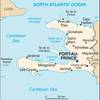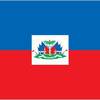Haiti [+]Compare [E]dit [H]istory
Aliases: Haiti/Ayiti, Republic of Haiti, Republique d'Haiti/Repiblik d AyitiObject «Haiti» was created due to
Add new object to «Haiti» or move existing objects here.
Object «Haiti» has attributes [Show empty attributes][Hide empty attributes]
| Attribute | Value |
|---|---|
| Geography | |
| Area | 27,750 km² |
| Continent | North America |
| Land area | 27,560 km² |
| Water area | 190 km² |
| Land boundaries | 376 km |
| Border countries |
|
| Coastline | 1,771 km |
| Mean elevation | 470 m |
| Lowest point | 0 m |
| Highest point | 2,680 m |
| People | |
| Population | 11,067,777 |
| Official languages |
|
| Religion | Roman Catholic |
| Government | |
| Long country name | Republic of Haiti |
| Short country name | Haiti |
| Long local name | Republique d'Haiti/Repiblik d Ayiti |
| Short local name | Haiti/Ayiti |
| Former name | Add |
| Government type | Semi-presidential republic |
| Capital | Port-au-Prince |
| Economy | |
| GDP (PPP) | 19,970,000,000 USD |
| GDP (OER) | 8,608,000,000 USD |
| GDP (real growth rate) | 1.2 % |
| GDP - per capita (PPP) | 1,800 USD |
| Gross national saving | 24.9 % of GDP |
| Labor force | 4,594,000 |
| Unemployment rate | 40.6 % |
| Population below poverty line | 58.5 % |
| Budget revenues | 1,567,000,000 USD |
| Budget expenditures | 1,650,000,000 USD |
| Military expenditures | Add |
| Taxes and other revenues | 18.2 % of GDP |
| Budget surplus or deficit | -1 % of GDP |
| Public debt | 31.1 % of GDP |
| Inflation rate | 14.7 % |
| Central bank discount rate | Add |
| Commercial bank prime lending rate | 13.1 % |
| Stock of narrow money | 1,273,000,000 USD |
| Stock of broad money | 1,273,000,000 USD |
| Stock of domestic credit | 3,112,000,000 USD |
| Market value of publicly traded shares | Add |
| Current account balance | -348,000,000 USD |
| Exports | 980,200,000 USD |
| Imports | 3,618,000,000 USD |
| Reserves of foreign exchange and gold | 2,361,000,000 USD |
| External debt | 2,762,000,000 USD |
| National currency | gourdes |
| National currency (code) | HTG |
| National currency (symbol) | G |
| National currency rate to USD | 65.21 |
The native Taino - who inhabited the island of Hispaniola when Christopher COLUMBUS first landed on it in 1492 - were virtually wiped out by Spanish settlers within 25 years. In the early 17th century, the French established a presence on Hispaniola. In 1697, Spain ceded to the French the western third of the island, which later became Haiti. The French colony, based on forestry and sugar-related industries, became one of the wealthiest in the Caribbean but relied heavily on the forced labor of enslaved Africans and environmentally degrading practices. In the late 18th century, Toussaint L'OUVERTURE led a revolution of Haiti's nearly half a million slaves that ended France's rule on the island. After a prolonged struggle, and under the leadership of Jean-Jacques DESSALINES, Haiti became the first country in the world led by former slaves after declaring its independence in 1804, but it was forced to pay an indemnity to France for more than a century and was shunned by other countries for nearly 40 years. After the US occupied Haiti from 1915-1934, Francois "Papa Doc" DUVALIER and then his son Jean-Claude “Baby Doc” DUVALIER led repressive and corrupt regimes that ruled Haiti from 1957-1971 and 1971-1986, respectively. A massive magnitude 7.0 earthquake struck Haiti in January 2010 with an epicenter about 25 km (15 mi) west of the capital, Port-au-Prince. Estimates are that over 300,000 people were killed and some 1.5 million left homeless. The earthquake was assessed as the worst in this region over the last 200 years. On 4 October 2016, Hurricane Matthew made landfall in Haiti, resulting in over 500 deaths and causing extensive damage to crops, houses, livestock, and infrastructure. Currently the poorest country in the Western Hemisphere, Haiti continues to experience bouts of political instability.
Similar objects
Most often compared with
Everyone can something to edit or add.
There was one edit, no edits waiting approval. Last edited by mann.zelma(9435), Sep 16, 2019 (60 fields were changed)
Help · Contact us · Disclaimer · Contributors · Developers · Donate


